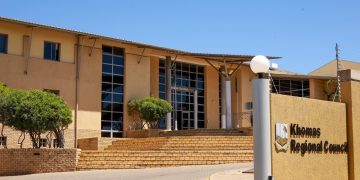
The Communications Regulatory Authority of Namibia (CRAN) is turning to low-earth orbit (LEO) satellites to improve internet access in remote parts of Namibia where existing infrastructure struggles to provide coverage.
CRAN Chief Executive Officer Emilia Nghikembua explained that Namibia’s vast and sparsely populated landscape makes it difficult to extend terrestrial networks to farming zones, agricultural land and remote lodges.
“In areas like farming zones, agricultural land, and remote lodges, we are dealing with expanses that stretch over a million hectares. Terrestrial networks can’t reach those regions effectively. That’s why we’re exploring low-earth orbit satellites as an alternative,” Nghikembua said.
LEO satellites, she added, offer connectivity where traditional infrastructure is not practical due to distance and terrain.
“These can reach areas that terrestrial towers cannot, such as farming land, lodges, and remote communities,” Nghikembua said.
Namibia faces a dual challenge of population and geographic coverage.
While 91% of the population has access to some form of 2G, 3G or 4G network, overall geographic coverage remains limited.
“We’ve achieved 91% coverage from a population perspective, which is encouraging. But the remaining 9%, that’s where the Universal Service Fund comes in. The real challenge, though, is geographic coverage. Namibia is vast and sparsely populated,” she noted.
According to Nghikembua, installing terrestrial infrastructure such as network towers is often economically unviable outside clustered population areas, as a single tower’s range is roughly 12 kilometres.
“We’re now exploring alternative technologies like low-earth orbit satellites,” she said.
The government has allocated N$140 million over three years to support the Universal Service Fund.
In the first phase, CRAN disbursed N$31 million to Mobile Telecommunications Limited (MTC) to deploy nine new sites.
“Priority was given to regions with 4G coverage below 80%: Kavango West, Kavango East, Kunene, Ohangwena, and Oshikoto. As a condition of the subsidy, 16 schools and 4 clinics in these areas will receive free, uncapped Wi-Fi for several years. These anchor institutions must be included wherever a site is constructed,” Nghikembua said.
CRAN’s latest market report shows mobile network coverage now reaches 91% of the population, with internet access in urban areas close to 85%, and rural access steadily improving.
“It’s important to clarify that this refers to population coverage, not geographic coverage. Due to Namibia’s unique landscape, the geographic gap remains wider. These figures show what can be achieved with targeted investment and strong partnerships,” Nghikembua said.
Schools and clinics are gaining better access to online resources, local businesses are reaching new markets, and isolated communities are becoming more connected.
The nine sites rolled out in the first phase are expected to bring connectivity to more than 5,000 Namibians who previously had none, she added.
Namibia’s satellite internet sector is expanding, with several providers targeting remote and underserved areas.
SEACOM leads in enterprise-grade LEO services through its partnership with Eutelsat OneWeb, though availability remains limited to select African markets.
Paratus Namibia and MTC Namibia currently offer VSAT services based on geostationary satellites, with Paratus planning future LEO deployments.
Starlink, operated by SpaceX, has applied for regulatory approval from CRAN to launch services in Namibia.
Once approved, it aims to provide high-speed, low-latency internet across the country.
Its entry could represent a major shift, offering the first consumer-focused LEO satellite service in Namibia.













